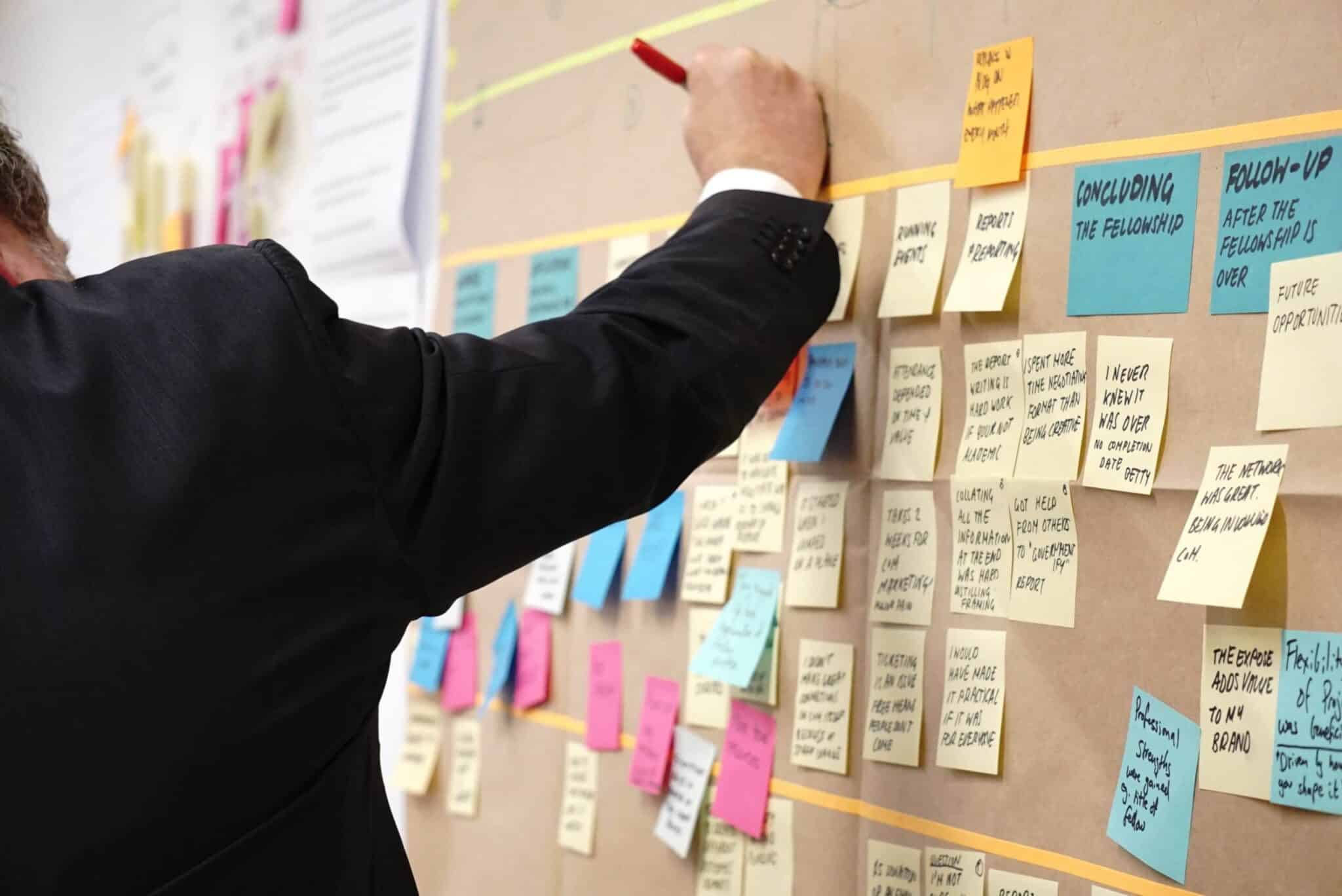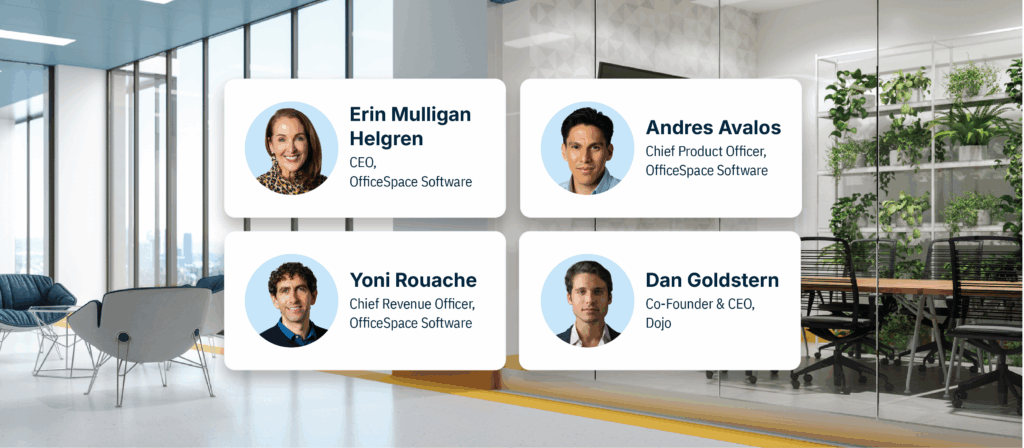5 Benefits of space management software for facility managers
By David Spence• 5 mins read•February 17, 2021

As a facility manager (FM), you’re tasked with not only creating but maintaining a productive, engaging office environment. It’s an involved position that requires juggling multiple components at once. It only gets trickier if you’re managing various properties that have their own unique characteristics.
This article explores a few ways facility managers can use space management software to create the ultimate workplace.
What is space management software?
Before we can discuss the ways facility managers can leverage real estate space management software, it’s essential to understand the benefits of adding this kind of software to their arsenal.
Space management software is a tool for planning, optimizing, and managing space, particularly office space. This kind of software gives FMs a comprehensive view of what’s happening in their space, making managing and improving the office smoother.
Effective facility teams can use space management software to:
- Facilitate data capture for space optimization and management
- Update floor plans and other building aspects in real-time
- Get real-time reports on what is happening in your space, like hot desking, sensors, building sensors, etc.
- Improve your space planning and visualization for new workspace components like physical distancing and shift work
Because space management software is one of the main components of an IWMS, it’s no wonder facilities teams rely on it for various workplace management functions.
Now that we’ve covered what space management software is and how to use it, let’s look at ways FMs can leverage it.

1. Gain clarity on how your space is being used
There’s no question that data is a significant part of a facility manager’s job. Data helps inform decisions regarding the office, employees, resources, budgeting, and more. Using a tool that centralizes and computes your occupancy information allows facility managers to understand how space is being used from a holistic perspective as well as at a granular level.
With a space allocation tool, you can identify space utilization trends with just a few clicks and instantly see how your office is being used. For example, if you’re trying to determine the best use of your space for your office transition plan post-COVID-19, a real estate space management solution helps you choose the best course of action.
Facility managers can view this rich occupancy data in a report format, making it easier to make effective decisions, support an idea, or get executive sign-off.
2. Identify ways to reduce costs
Because space management software solutions help facility managers understand how their space is used (and how it’s not being used), it can help identify ways to cut costs.
For example, if your company is going to 50% occupancy, you can get a complete look at how your space is being used, what changes you can make to get the most out of the space, and more.
Space management software can help you minimize expenses on essential building functions like your HVAC system and more. Saving money on emergency or reactive maintenance with methods like preventative and predictive maintenance—or maintenance strategies that solve a problem or fix an issue before the fact—can save companies significant money as well.
Identifying areas where you can save on core building costs is always a plus for creating the ultimate office space.

3. Spend less time on administrative tasks
As a facility manager, you’re juggling all kinds of tasks. From optimizing your office floor plan to daily tasks like managing requests, overseeing building functionality and maintenance, you’re keeping tabs on several things at once.
Space management software can help you oversee these tasks from a single source of truth, so you can spend less time toggling between tools or systems and more time crossing things off your to-do list. With space management software, FMs can make changes to workplace utilization in just a few clicks.
It’s also helpful when planning an office move. There’s so much that goes into move management, like figuring out where everyone will sit and where to place resources. Space management software streamlines intricate, logistical projects like this by offering a comprehensive floor plan view and scenario tool, request management system, and more.
This tool can also help you organize your internal and external resources. You can better understand what you have and what you need—or what you don’t—in a single view. From employee requests (managed via request manager), you can understand what your team needs to be successful.
4. Increase employee productivity
As employees and companies alike continue to adapt to the changing workplace landscape, crafting and maintaining a workplace where employees feel engaged, cared about, and supported is important.
Building a positive work environment—whether your team is fully back in the office or has adopted a hybrid work model—is critical to employee productivity and happiness as well as the success of any company. In fact, a study from the Delft University of Technology and the University of Pavia found that office layouts and desk locations have a significant impact on employee satisfaction.
Where does space management software come into play? Facility managers can use this tool to design an ideal office environment. Arranged seating and shared spaces for optimal productivity, like office neighborhoods, can be done in a few clicks. Plus, employees can check-in remotely to their desks before entering the office, which helps facility managers understand occupancy at any given time.
Space management software also makes offering other flexible work arrangements easier. You can manage desk and room booking from one central place and manage your company’s shift work program to see how your space is used. Space management software plays a vital role in the evolving dynamic workplace and empowering employees to work when and where they’re most productive.

5. Streamline your desk and room booking system
As we mentioned above, desk and room booking software is a significant part of creating a flexible (and safe) work environment. Desk and room booking systems separate from your space management software pose challenges, like difficulties around room syncing and understanding true building, room, and desk capacity. Using a unified system across the board will ensure there are no double bookings, over-crowded conference rooms, and scheduling conflicts.
This feature serves many purposes; room and desk booking software can:
- Help managers understand where employees are working (remotely or in-office)
- Give facility managers insight into space utilization
- Inform cleaning needs
- Make shift schedule planning easier and more transparent with drag-and-drop capabilities
Desk and room booking software can assist with your return-to-office strategy. Syncing these tools can make the transition easier because facility managers can see essential information like occupancy data reports, updated floor plans, available desks for shift work planning, and more.
Space management software and successful facility management go hand-in-hand
The best space management tools help facility managers streamline their operations, plan better, and optimize the office. Space management software that functions with other tools like desk booking and request management features helps build a more efficient and transparent workplace.
Data is the core of facility management success. Leveraging software that lays the foundation for better decision making will benefit the company in the immediate future as well as in the long term.
Does your company use space management software? How does it help improve your facility operations?
See the benefits of space management software in action. Request a demo of OfficeSpace Software today.
Photos: zeljkosantrac, John Schnobrich, CoWomen, Jo Szczepanska



